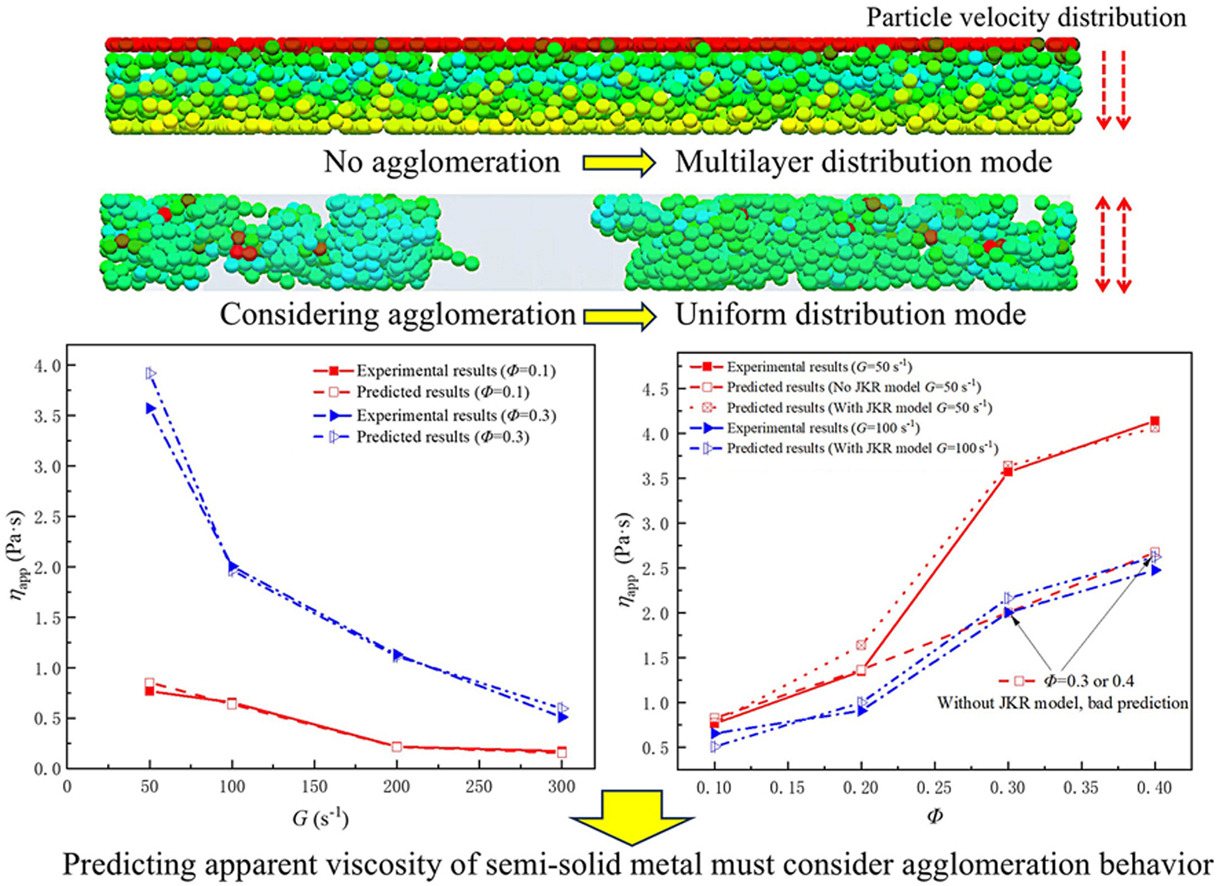• Simulation results proved that spherical evolution of clusters leads to shear thinning.
• Blockage caused by large cluster formed under high solid volume fraction leads in high apparent viscosity.
• SSM apparent viscosity can be predicted based on estimation of lubrication force range by ANNs.
• Particle agglomeration must be considered when predicting semi-solid apparent viscosity.
Accurate prediction of apparent viscosity and analyzing the influence mechanism of particle behavior on apparent viscosity is of great importance for the semi-solid processing process. In this paper, the coupled CFD-DEM method is employed to study the solid-liquid two phase flow and particle behavior in semi-solid aluminum. The artificial neural networks method is used to predict the lubrication force range and calculate the apparent viscosity of semi-solid aluminum. The results show that the increasing shear rate results in the increasing coordination number of clusters, indicating that the spherical evolution of clusters caused by shear is important reason for the shear thinning of semi-solid metal. The blockage caused by the large cluster formed under high solid volume fraction leads in the high apparent viscosity. Predicting the apparent viscosity of semi-solid metal must consider the particle agglomeration behavior. Based on artificial neural networks method, the apparent viscosity of semi-solid metal can be estimated accurately by predicting the lubrication force range under different solid volume fractions and shear conditions.

